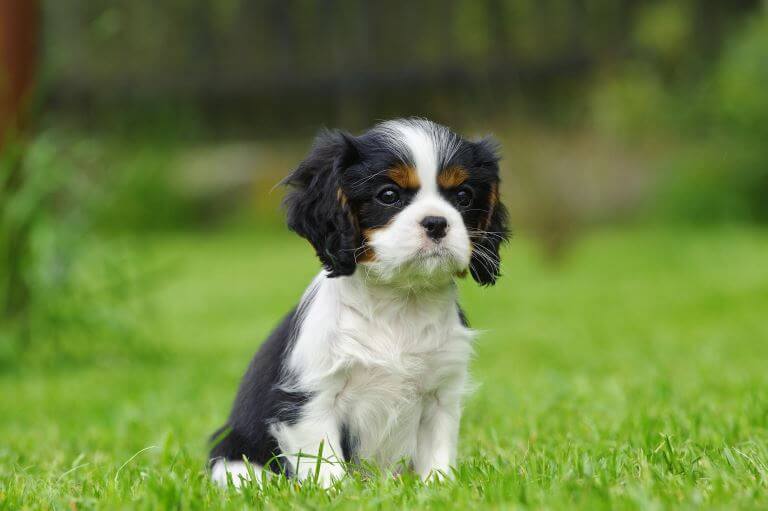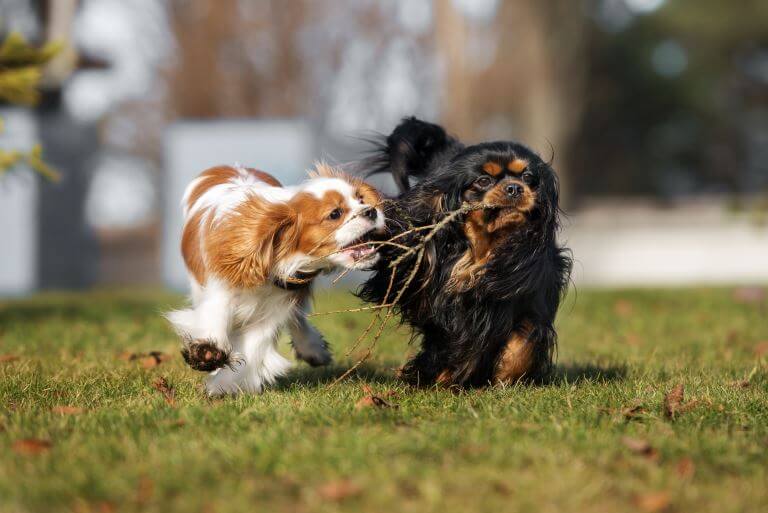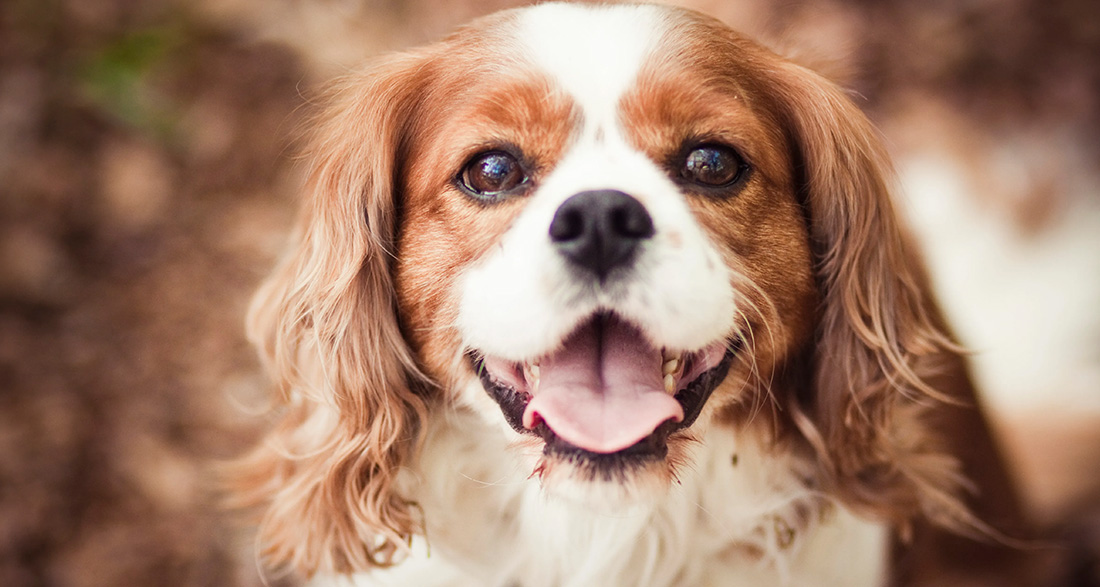The loyal gaze, fluffy droopy ears, and friendly nature make the Cavalier King Charles Spaniel an excellent companion for everyone. In this profile, discover everything about the history, character, care, and maintenance of Cavaliers. There are also sure to be some exciting facts that you may not have known.
History of the Cavalier King Charles Spaniel
The Cavalier King Charles Spaniel is an ancient breed and a direct descendant of dogs belonging to the British nobility. It served as a playmate for the king’s children and as a bed warmer for noblewomen. The Cavalier is featured in several famous oil paintings, such as the “Portrait of the Children of Charles I” from 1635, and medieval writings also mention the breed. The breed was later named after King Charles and was called the “King Charles Spaniel.” Because their sole purpose was to look extravagant and cute, they were bred to increasingly extreme standards. As a result, the muzzle became shorter, the eyes larger, and the head rounder. The original dog was eventually hardly recognizable. Around 1900, breeders even considered renaming the breed to “Toy Spaniel.” Perhaps King Edward VII personally prevented this designation.
Some dog enthusiasts decided to revive the old type when they saw old paintings of the Spaniel. In the early 1920s, a wealthy American named Roswell Eldridge offered a substantial sum for a re-breeding based on the historical paintings. Breeder Mostyn Walker won the prize with her dog Ann’s Son, and the “Cavalier King Charles Spaniel Club” was established. Subsequently, the new breed was officially recognized by the Kennel Club in 1945 and now distinctly differed from the short-nosed King Charles Spaniel. The re-bred Spaniel gained significant popularity and is still widespread globally, especially as a family and senior dog. This explains why it was classified into FCI Group 9, “Companion and Toy Dogs.”
Breed Overview
GROUP: Toy
HEIGHT: 12 to 13 inches (to the withers)
WEIGHT: around 13 to 18 pounds
TEMPERAMENT: Playful, affectionate, patient, graceful, sociable, gentle
COAT: Long, sleek and silky coat with feathering around ears, feet, chest, and tail
COAT COLOR: Four color varieties include tricolor, Blenheim (red and white), ruby, and black and tan
HYPOALLERGENIC: No
LIFE SPAN: 12 to 14 years
Temperament and Character
The Cavalier King Charles Spaniel is an affectionate, cheerful, and highly obedient dog. There are few breeds as peaceful as this one. They would prefer to be cuddled and petted by their owners all day long. Additionally, these small Spaniels show no tendency towards nervousness, and aggressive behavior is foreign to them. For this reason, the Cavalier King Charles Spaniel is easy to train, making it an excellent companion in everyday life.

Elderly people and children get along well with this affectionate dog, and it easily gets along with other dogs and pets. It delights in meeting strangers and greets them joyfully but not intrusively. The Cavalier aims to make people happy and is a genuine cuddle bug. Even people who don’t typically like dogs will find the friendly Cavalier endearing. They are not barkers and, therefore, not suitable as guard dogs.
| Affection Level | High |
| Friendliness | High |
| Kid-Friendly | High |
| Pet-Friendly | High |
| Exercise Needs | Medium |
| Playfulness | Medium |
| Energy Level | Medium |
| Trainability | High |
| Intelligence | Medium |
| Tendency to Bark | Medium |
| Amount of Shedding | Medium |
Acquiring a Cavalier King Charles Spaniel
What should I look for when buying? The Cavalier King Charles Spaniel is relatively undemanding and feels comfortable in a small apartment as long as it gets out regularly. Officially, it is bred in four colors: Black and Tan (black with tan markings), Blenheim (pearl white with chestnut markings), Ruby (deep red), and Tricolor (black and white with tan markings). Before bringing a puppy home, choose a reputable breeder who prioritizes the health of their dogs. For a purebred puppy with a health check, expect to pay between $1200 and $1500. However, there are also Cavalier King Charles Spaniels in shelters looking for new homes, grateful for love and affection.

Puppy Development and Training
Cavaliers are pleasant and gentle dogs, requiring a loving upbringing. Training the puppy will not be particularly challenging. They are very trainable and enjoy engaging with their owners. They learn basic commands like any other dog through ample praise and consistent prohibition. Despite their friendly nature, Cavaliers need good socialization and should ideally attend puppy school with you.
How to Care for a Cavalier King Charles Spaniel
Activities:
Most Cavalier King Charles Spaniels do not require an enormous amount of exercise and are content with regular walks. You should take them out twice a day for about an hour each time. They particularly enjoy places where they can walk without a leash. A Cavalier King Charles Spaniel should be mentally and physically stimulated. They also appreciate small athletic tasks, such as fetching sticks or agility adapted to their size. If you don’t run too fast and too long, these small dogs can also join you for a jog. Like a true Spaniel, Cavaliers are true water lovers and enjoy jumping into the lake in the summer.

Health and Grooming
The long, silky coat of the Cavalier King Charles Spaniel requires regular care, and you should comb it several times a week. It needs careful attention, especially around the paws and ears, to prevent matting. During shedding seasons in spring and fall, brush them daily. Additionally, regularly check and clean their large eyes to prevent infections. If necessary, you can clean the folds of the dog’s face with a special lotion.
The re-breeding has resulted in an extremely small breeding base, causing many representatives of the breed to unfortunately suffer from certain hereditary diseases. These diseases primarily affect the heart and nerves and impact a significant portion of the population. Heart disease mainly occurs in old age, but you can reduce the risk through a healthy diet. Some Cavaliers experience spontaneously occurring muscle cramps triggered by neurological malfunctions. Today’s breeders usually focus on pairing only healthy dogs to slowly eradicate these hereditary diseases.
Interesting and Fun Facts
To this day, there is a law that allows bringing the Cavalier King Charles Spaniel into the English Parliament. The regulation dates back to a royal decree from dog lover King Charles II. The most famous Cavalier King Charles Spaniel was Queen Victoria’s dog Dash, who accompanied her from childhood to her reign. The dog lived to be ten years old and had its own grave in Windsor Home Park. The epitaph reads: “Here lies DASH, the favorite spaniel of her Majesty Queen Victoria, in his 10th year. His attachment was without selfishness, his playfulness without malice, his fidelity without deceit. READER, wouldst thou be loved and mourned, die like DASH.”
Even today, the Spaniel remains a popular celebrity dog. Victoria Beckham was even featured on the cover of Vogue with her Tricolor dog Digby. “Sex and the City” star Kristin Davis not only has a fondness for Cavaliers on-screen but has also adopted her four-legged co-star. During Ronald Reagan’s presidency, his Cavalier King Charles Spaniel Rex lived in the White House as the “First Dog.”
Do you have a Cavalier King Charles Spaniel, or are you thinking of getting one? Tell me in the comments what makes them special in your opinion!


